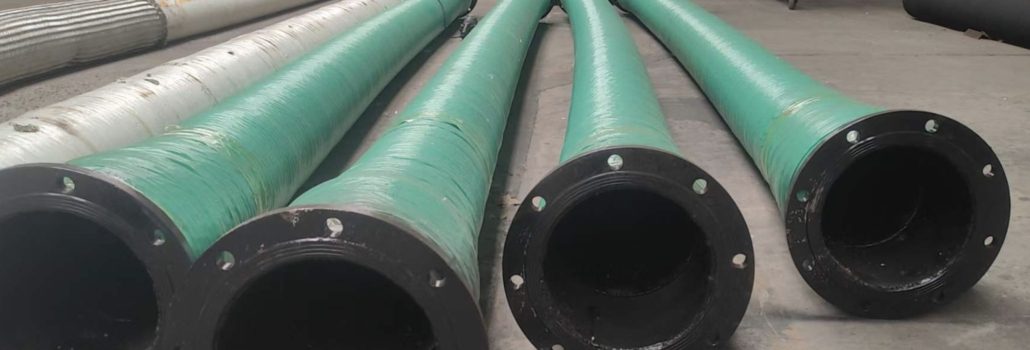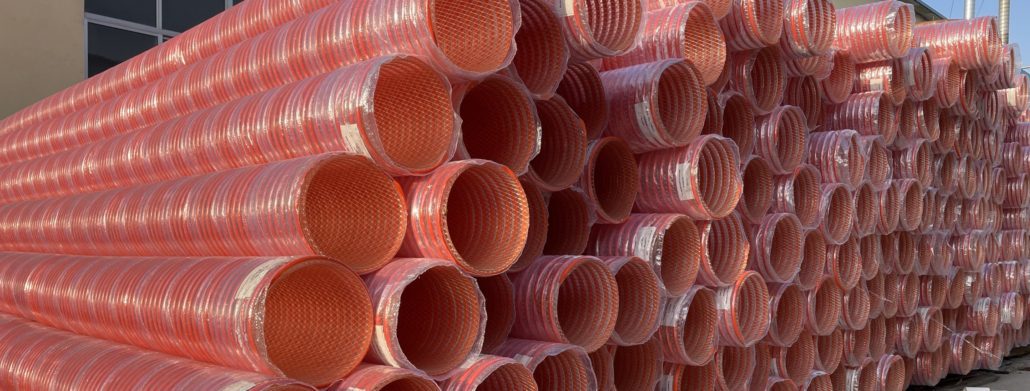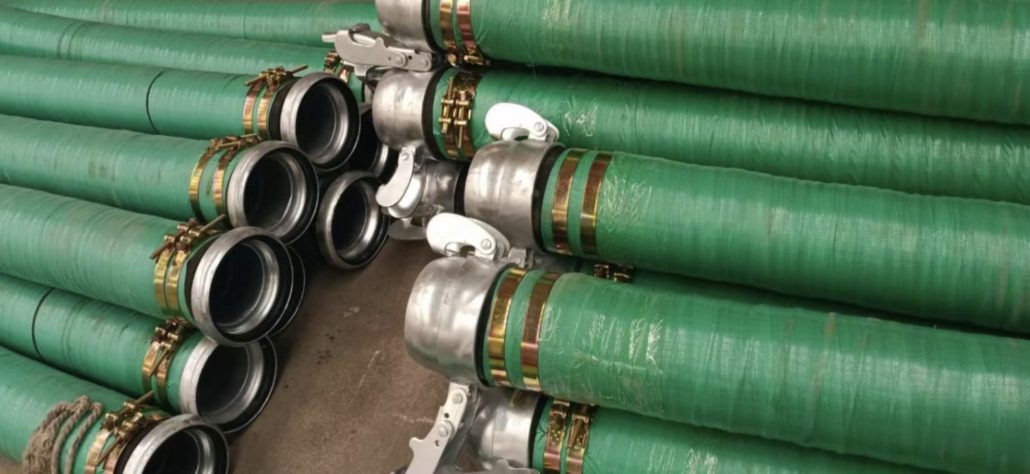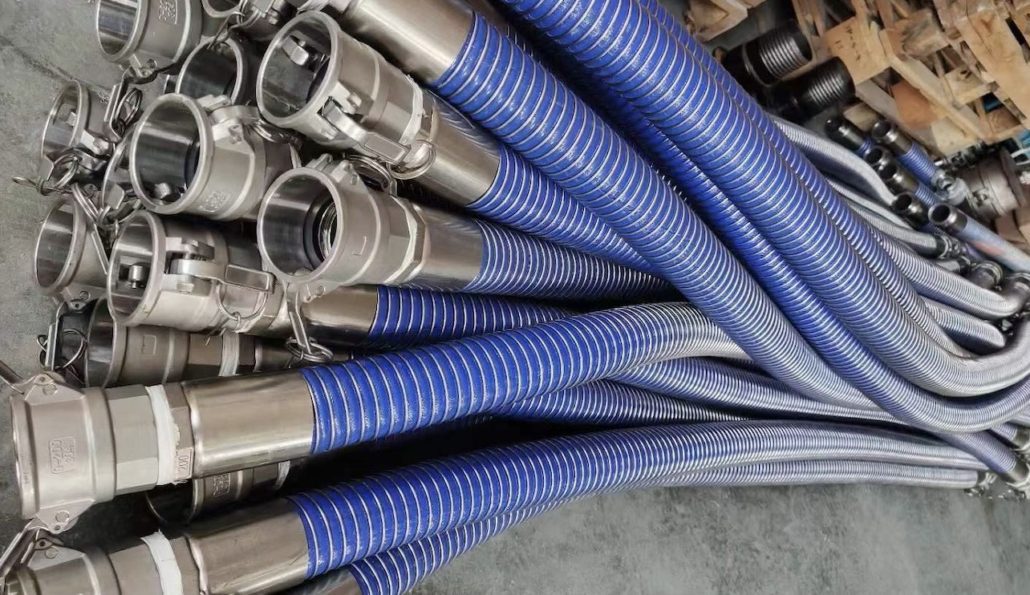Slurry Pump Hose:
Essential Equipment for Efficient Operations
| Introduction | – Definition of Slurry |
| – Importance of Slurry Pump Hose | |
| Section 1 | Types of Slurry Pump Hoses |
| – Rubber Hoses | |
| – PVC Hoses | |
| – Composite Hoses | |
| Section 2 | Key Features of Slurry Pump Hoses |
| – Abrasion Resistance | |
| – Chemical Resistance | |
| – Flexibility | |
| – Pressure Rating | |
| Section 3 | Applications of Slurry Pump Hoses |
| – Mining Industry | |
| – Construction Industry | |
| – Dredging Operations | |
| Section 4 | Proper Maintenance and Care |
| – Regular Inspection | |
| – Cleaning and Storage | |
| Section 5 | Choosing the Right Slurry Pump Hose |
| – Material Considerations | |
| – Application Considerations | |
| – Pressure and Temperature Ratings | |
| Conclusion | |
| FAQs |
When it comes to transferring abrasive materials, slurry pumps play a crucial role in various industries. These pumps require robust hoses that can withstand the demanding conditions of slurry transportation. In this article, we will explore the world of slurry pump hoses, discussing their types, key features, applications, maintenance, and how to choose the right hose for your needs.
Introduction
Slurry, a mixture of solid particles and liquid, is encountered in industries like mining, construction, and dredging. Slurry pump hoses are specially designed to handle such abrasive slurries efficiently, preventing damage and ensuring uninterrupted operations.
Definition of Slurry
Slurry refers to a suspension of solid particles in a liquid medium. It can contain various materials such as sand, gravel, minerals, or waste materials. Slurry often has high viscosity and can be challenging to pump without the right equipment.
Importance of Slurry Pump Hose
The slurry pump hose acts as a vital link between the pump and the pipeline, providing a durable and flexible conduit for the slurry to flow through. It plays a crucial role in maintaining the efficiency and longevity of the entire slurry transportation system.
Section 1: Types of Slurry Pump Hoses
There are several types of slurry pump hoses available in the market, each offering specific advantages for different applications. The most common types include rubber hoses, PVC hoses, and composite hoses.
Rubber Hoses
Rubber hoses are widely used in slurry pumping due to their excellent abrasion resistance and flexibility. They can withstand high-pressure environments and are suitable for applications involving abrasive materials.

Rubber slurry pump hose
PVC Hoses
PVC hoses are lightweight and cost-effective options for slurry pumping. They offer good chemical resistance and are suitable for low-pressure applications where flexibility is crucial.

PVC Slurry Pump Hoses
Composite Hoses
Composite hoses combine the benefits of different materials, such as rubber and plastic, to provide superior performance. They offer excellent resistance to a wide range of chemicals and are suitable for demanding slurry transfer operations.
Section 2: Key Features of Slurry Pump Hoses
When selecting a slurry pump hose, certain key features should be considered to ensure optimal performance and longevity. These features include abrasion resistance, chemical resistance, flexibility, and pressure rating.
Abrasion Resistance
Slurry transportation involves abrasive particles that can cause rapid wear and tear on hoses. A high level of abrasion resistance is crucial to extend the hose’s lifespan and reduce the frequency of replacements. Look for hoses with reinforced layers and specialized rubber compounds that offer superior abrasion resistance.
Chemical Resistance
Different slurries may contain corrosive or chemically aggressive materials. It is essential to choose a slurry pump hose that exhibits excellent chemical resistance to ensure compatibility with the transported slurry. Consider the specific chemicals present in your application and select a hose material that can withstand them.
Flexibility
Flexibility is a crucial factor, particularly in applications where the hose needs to navigate tight spaces or bends. A flexible hose allows for easy installation and reduces the risk of kinks or damage. Ensure the hose you choose offers the necessary flexibility for your specific application.
Pressure Rating
The pressure rating of a slurry pump hose determines its ability to withstand the forces exerted during pumping operations. Consider the operating pressure of your slurry pump system and select a hose with a suitable pressure rating to ensure safe and efficient performance.
Section 3: Applications of Slurry Pump Hoses
Slurry pump hoses find applications in various industries that deal with abrasive materials. Let’s explore some key industries where these hoses are extensively used.
Mining Industry
In the mining industry, slurry pump hoses are vital for transporting ore, minerals, and tailings. They are designed to withstand the harsh conditions of mining operations and facilitate the efficient transfer of abrasive slurries over long distances.
Construction Industry
In construction projects such as tunneling and foundation work, slurry pump hoses are used to transport slurry mixtures containing cement, sand, and other materials. These hoses ensure a consistent flow of slurry, enabling efficient construction processes.
Dredging Operations
Dredging involves the removal of sediment, debris, and contaminants from water bodies. Slurry pump hoses play a crucial role in dredging operations by transferring the dredged material to the desired location. These hoses need to withstand constant abrasion and ensure efficient and uninterrupted dredging processes.

slurry pump hoses
Section 4: Proper Maintenance and Care
To maximize the lifespan and performance of your slurry pump hose, proper maintenance and care are essential. Follow these guidelines for regular inspection, cleaning, and storage.
Regular Inspection
Regularly inspect your slurry pump hose for signs of wear, such as cracks, bulges, or leaks. Check the hose connections and fittings for tightness and security. Identify any potential issues early on to prevent unexpected failures.
Cleaning and Storage
After each use, clean the slurry pump hose thoroughly to remove any residual slurry or debris. This prevents the accumulation of abrasive particles that can cause damage. Properly store the hose in a clean and dry environment, away from direct sunlight and extreme temperatures.
Section 5: Choosing the Right Slurry Pump Hose
Selecting the right slurry pump hose requires careful consideration of various factors. Keep the following aspects in mind when choosing a hose for your specific application.

slurry pump hose
Material Considerations
Evaluate the compatibility of the hose material with the transported slurry. Consider factors such as abrasion resistance, chemical resistance, and flexibility based on the specific characteristics of your slurry.
Application Considerations
Understand the operational requirements of your application. Consider factors like flow rate, pressure, temperature, and the distance of slurry transportation. Choose a hose that can meet these requirements effectively.
Pressure and Temperature Ratings
Ensure that the selected hose has the appropriate pressure and temperature ratings to withstand the conditions it will encounter during operation. Exceeding these ratings can lead to hose failure and disruptions in your slurry pumping processes.
Conclusion
Slurry pump hoses are indispensable components in industries that deal with abrasive materials. Their durability, chemical resistance, flexibility, and pressure-handling capabilities are crucial for efficient slurry transportation. By understanding the different types, key features, applications, maintenance practices,and selection criteria of slurry pump hoses, you can make informed choices that optimize the performance and longevity of your slurry pump system.
In conclusion, investing in high-quality slurry pump hoses is essential for smooth and efficient operations in industries such as mining, construction, and dredging. These hoses offer superior abrasion resistance, chemical resistance, flexibility, and pressure handling capabilities. By selecting the right hose for your specific application and following proper maintenance practices, you can ensure the reliable and uninterrupted transfer of abrasive slurries.
FAQs
Q: How often should I inspect my slurry pump hose?
A: Regular inspections are recommended, ideally before each use, to identify any signs of wear or damage.
Q: Can I use a regular hose for slurry pumping?
A: No, regular hoses are not suitable for handling abrasive slurries. Slurry pump hoses are specifically designed to withstand the challenging conditions and abrasion encountered in slurry transportation.
Q: What should I do if my slurry pump hose develops a leak?
A: If you notice a leak in your slurry pump hose, it is best to replace it promptly to prevent disruptions and potential damage to the system.
Q: Are composite hoses more expensive than rubber or PVC hoses?
A: Composite hoses may have a higher upfront cost than rubber or PVC hoses, but they offer superior chemical resistance and durability, which can result in long-term cost savings.
Q: Can I repair a damaged slurry pump hose?
A: It is generally not recommended to repair damaged slurry pump hoses. It is best to replace them with new hoses to ensure the integrity and reliability of the system.
Thank you for taking the time to learn about slurry pump hoses. For more information and to explore our range of high-quality hoses, visit our website at www.sunhose.com.

 sunhose
sunhose sunhose
sunhose